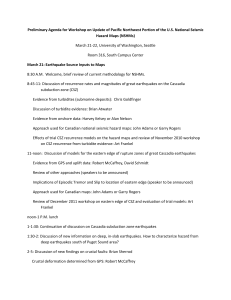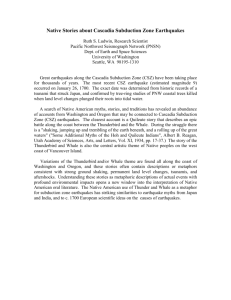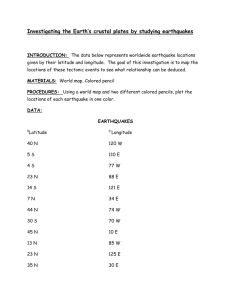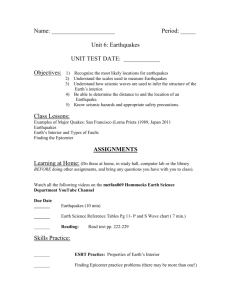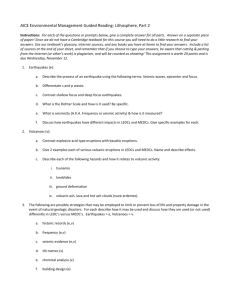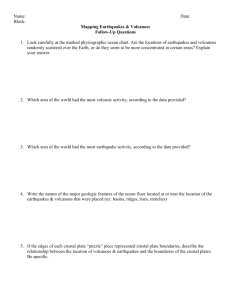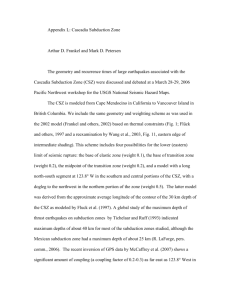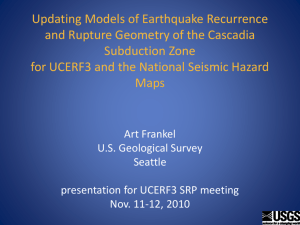here - CREW
advertisement
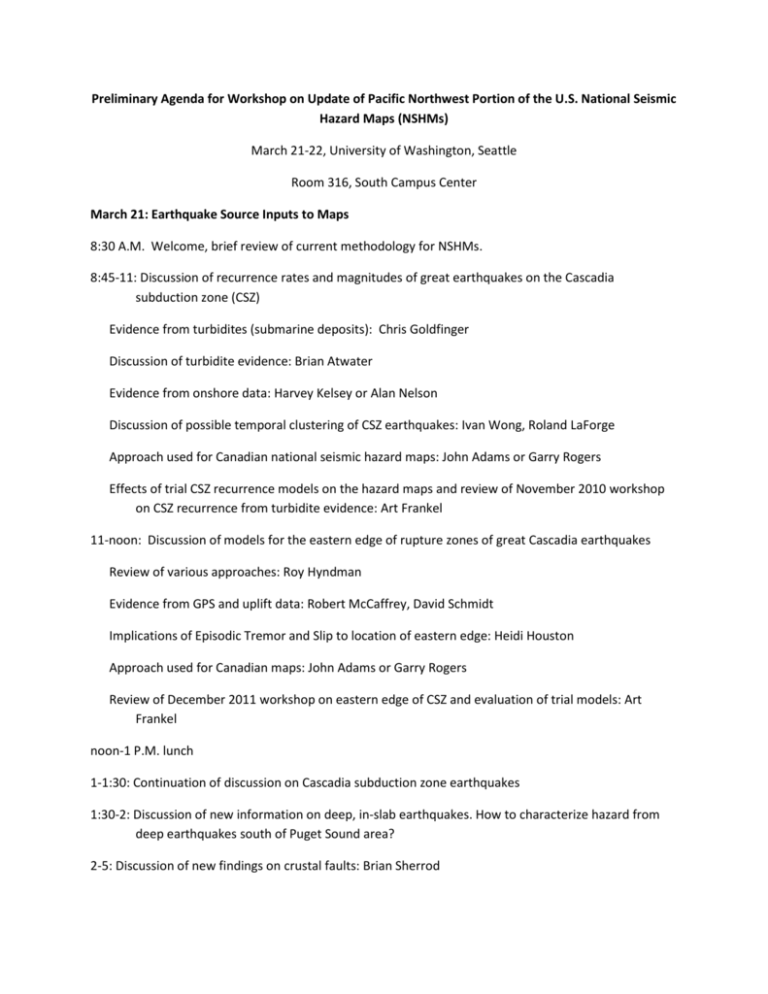
Preliminary Agenda for Workshop on Update of Pacific Northwest Portion of the U.S. National Seismic Hazard Maps (NSHMs) March 21-22, University of Washington, Seattle Room 316, South Campus Center March 21: Earthquake Source Inputs to Maps 8:30 A.M. Welcome, brief review of current methodology for NSHMs. 8:45-11: Discussion of recurrence rates and magnitudes of great earthquakes on the Cascadia subduction zone (CSZ) Evidence from turbidites (submarine deposits): Chris Goldfinger Discussion of turbidite evidence: Brian Atwater Evidence from onshore data: Harvey Kelsey or Alan Nelson Discussion of possible temporal clustering of CSZ earthquakes: Ivan Wong, Roland LaForge Approach used for Canadian national seismic hazard maps: John Adams or Garry Rogers Effects of trial CSZ recurrence models on the hazard maps and review of November 2010 workshop on CSZ recurrence from turbidite evidence: Art Frankel 11-noon: Discussion of models for the eastern edge of rupture zones of great Cascadia earthquakes Review of various approaches: Roy Hyndman Evidence from GPS and uplift data: Robert McCaffrey, David Schmidt Implications of Episodic Tremor and Slip to location of eastern edge: Heidi Houston Approach used for Canadian maps: John Adams or Garry Rogers Review of December 2011 workshop on eastern edge of CSZ and evaluation of trial models: Art Frankel noon-1 P.M. lunch 1-1:30: Continuation of discussion on Cascadia subduction zone earthquakes 1:30-2: Discussion of new information on deep, in-slab earthquakes. How to characterize hazard from deep earthquakes south of Puget Sound area? 2-5: Discussion of new findings on crustal faults: Brian Sherrod Crustal deformation determined from GPS: Robert McCaffrey, Comparison of observed and predicted seismicity rates from crustal deformation: Roy Hyndman New model linking eastern WA and western WA faults: Richard Blakely Faults in western Washington: Harvey Kelsey Faults in eastern Washington: Brian Sherrod Faults in Oregon: Ian Madin Discussion of Quaternary Fault Database: Kathy Haller Approach used for Canadian maps: John Adams or Garry Rogers March 22: Ground-Motion Prediction Equations and Engineering Issues for the Pacific Northwest 9 A.M.-noon Discussion of ground-motion prediction equations (GMPE's; also known as attenuation relations) used in the national seismic hazard maps (subduction-zone interface events, deep in-slab events, and crustal events) Description of subduction-zone GMPE's used in BC Hydro hazard study: Norm Abrahamson Latest results on subduction- zone GMPE's: Gail Atkinson Effects of different subduction-zone GMPE's on seismic hazard maps: Mark Petersen and Morgan Moschetti Plans for NGA (Next Generation Attenuation relations) for subduction-zone GMPE's: Yousef Bozorgnia What have we learned about ground shaking of great subduction-zone earthquakes from the recordings of the Tohoku, Japan and Maule, Chile earthquakes? Art Frankel and others Ground shaking from the Christchurch, New Zealand earthquake; comparison with NGA for crustal earthquakes: Dave Boore noon- 1 PM. lunch 1-3: Discussion of engineering needs and concerns in the Pacific Northwest. How can hazard assessment products be improved? Evaluation of effects of long-duration shaking from CSZ great earthquakes on building performance: Abbie Liel Long-period ground motions (1-10 sec period): C.B. Crouse Earthquake engineering issues for the Pacific Northwest: John Hooper Description of new downhole seismic array in Seattle to study liquefaction: Paul Bodin Design map procedures and USGS design-map products: Nicolas Luco 3 PM: adjourn
